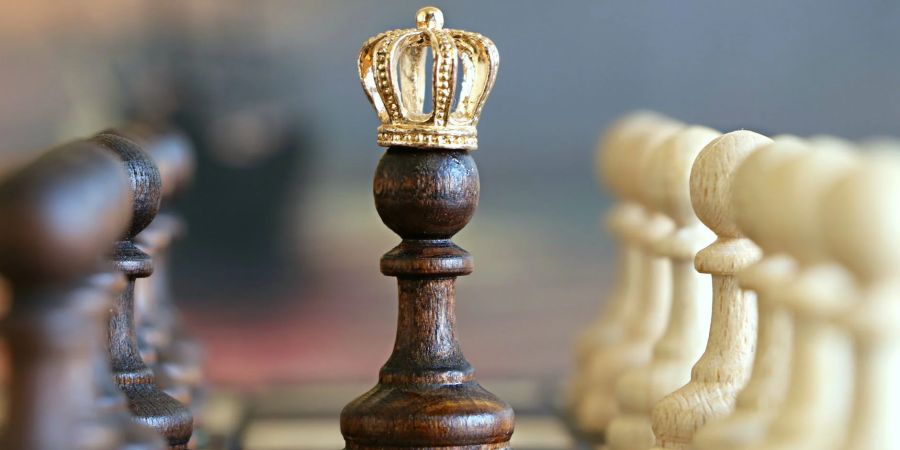

The king (♔, ♚) is the most important piece in the game of chess. It may move to any adjoining square; it may also perform a move known as castling. If a player's king is threatened with capture, it is said to be in check, and the player must remove the threat of capture on the next move. If this cannot be done, the king is said to be in checkmate, resulting in a loss for that player. A player cannot make any move that places their own king in check. Despite this, the king can become a strong offensive piece in the endgame or, rarely, the middlegame.
White king
Black king
In algebraic notation, the king is abbreviated by the letter K among English speakers. The white king starts the game on e1; the black king starts on e8. Unlike all other pieces, only one king per player can be on the board at any time, and the kings are never removed from the board during the game.
Chess strategy is the aspect of chess play concerned with evaluation of chess positions and setting goals and long-term plans for future play. While evaluating a position strategically, a player must take into account such factors as the relative value of the pieces on the board, pawn structure, king safety, position of pieces, and control of key squares and groups of squares (e.g. diagonals, open files, and individual squares). Chess strategy is distinguished from chess tactics, which is the aspect of play concerned with the move-by-move setting up of threats and defenses. Some authors distinguish static strategic imbalances (e.g. having more valuable pieces or better pawn structure), which tend to persist for many moves, from dynamic imbalances (such as one player having an advantage in piece development), which are temporary.[1] This distinction affects the immediacy with which a sought-after plan should take effect. Until players reach the skill level of "master", chess tactics tend to ultimately decide the outcomes of games more often than strategy. Many chess coaches thus emphasize the study of tactics as the most efficient way to improve one's results in serious chess play.
The Immortal Game was a game of chess, played in 1851 by Adolf Anderssen and Lionel Kieseritzky. It was played while the London 1851 chess tournament was in progress, an event in which both players participated. However, the Immortal Game was itself a casual game, not played as part of the tournament. Anderssen won the game by allowing a double rook sacrifice, a major loss of material, while also developing a mating attEck with his remaining minor pieces. Despite losing the game, Kieseritzky was impressed with Anderssen's performance. Shortly after it was played, Kieseritzky published the game in La Régence, a French chess journal which he helped to edit. In 1855, Ernst Falkbeer published an analysis of the game, describing it for the first time with its namesake "immortal".
